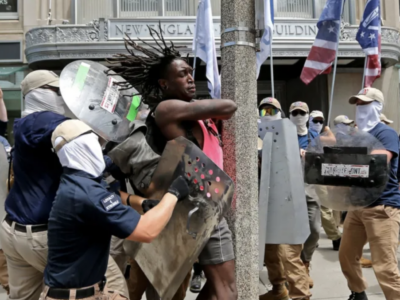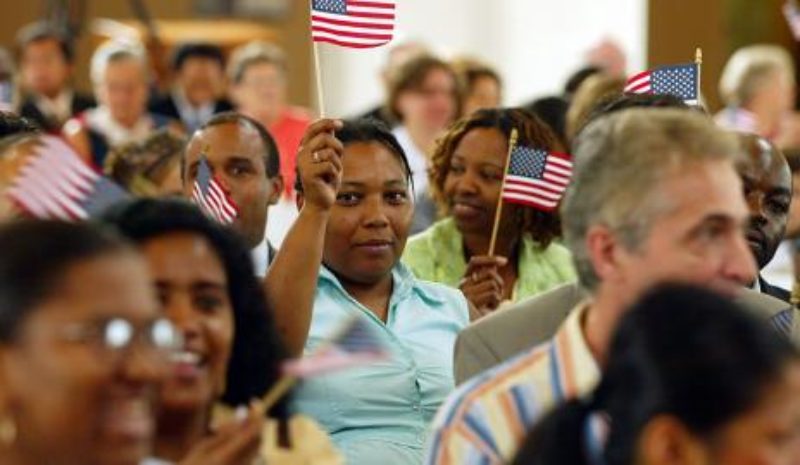Civil Rights are Human Rights: Reflections from Montgomery, Alabama
“True peace is not merely the absence of tension; it is the presence of justice.”
– Dr. Martin Luther King, Jr.
Today marks 56 years since the assassination of Dr. Martin Luther King, Jr., and last week was the 59th anniversary of Dr. King leading thousands in a march from Selma to Montgomery to demand voting rights for Black Americans.
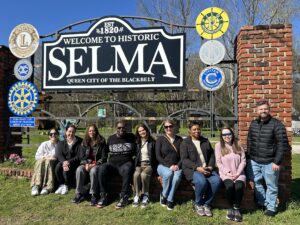
Staff members from Human Rights First
A group of staff from Human Rights First recently traveled to Montgomery, Alabama to understand more about the Black American civil rights experience. We traced the 1965 civil rights march from Selma to Montgomery, visited the Legacy Museum and the National Memorial for Peace and Justice, and toured Montgomery, the birthplace of the U.S. Civil Rights Movement.
This trip offered an opportunity to reflect on our country’s history of enslavement, segregation, abrogation of voting rights, and deepen our work’s ties between civil rights and human rights.
Before becoming the heart of the Civil Rights Movement, Montgomery was a center of the domestic slave trade, and was the first capital of the Confederacy.
A relatively small city, Montgomery’s rich and complicated history is filled with important landmarks from both the slave trade and the Civil Rights Movement. Visitors can see the riverwalk where slaves arrived to be sold, Martin Luther King Jr.’s home, the Dexter Avenue Baptist Church where activists organized the Montgomery Bus Boycott, and more.
On Dexter Avenue, just across from a statue of Rosa Parks, is the Court Square Fountain, once the site of Montgomery’s slave market. It now features a “Black Lives Matter” mural painted by local artist Michelle Browder.
Local tour guide Jake Williams, who at the age of 12 participated in the 1965 civil rights march, stressed that each breakthrough for racial equality during the campaign for civil rights was preceded by days, months, and years of persistent work from activists and organizers.
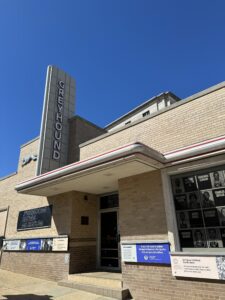
The Freedom Rides Museum
One organizer of note was Jo Ann Robinson, a leader of the Montgomery Bus Boycott. She spent years building a foundation of opposition to Montgomery’s racist bus system. When Rosa Parks was arrested in December 1955 for refusing to give up her bus seat to a white passenger, Robinson and others were ready to mobilize, staying up all night to print tens of thousands of leaflets to spread the word about a one-day bus boycott. Their efforts led to one of the lengthiest and most successful campaigns for racial equality in American history, lasting 381 days and leading the Supreme Court to desegregate public accommodations like bus lines.
Montgomery has a rich history of this type of activism. As white lawmakers created new restrictions on where Black citizens could organize and congregate, Black activists devised creative solutions to work around these obstacles, often at immense personal risk.
Those who organized and participated in the Selma to Montgomery march were attacked and some were killed along their 54-mile journey by members of white supremacist groups like the Ku Klux Klan.
The history of this struggle, its successes and often violent costs, is powerfully presented at the Legacy Museum in Montgomery. Founded by the Equal Justice Initiative (EJI), the museum offers an immersive journey into racial injustice and demonstrates how mass incarceration is an extension of slavery.
Bryan Stevenson, the founder of EJI and the Legacy Museum, highlights the connection between abolition, civil rights, and mass incarceration in this HBO documentary. In it, Stevenson says, “everybody imagines that if they were in Alabama in the 1960s, they would have been marching with Dr. King… And the truth of it is, I don’t think you can claim that if today you are watching these systems be created that are incarcerating millions of people, throwing away the lives of millions of people, destroying communities, and you’re doing nothing.”
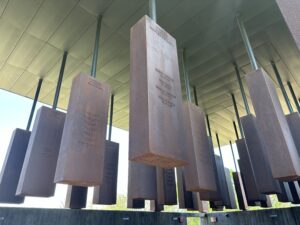
Monuments honoring victims of racial terror lynchings at The National Memorial for Peace and Justice
An extension of the Legacy Museum, The National Memorial for Peace and Justice is dedicated to the more than 4,400 Black Americans who were victims of racial terror lynchings between 1877 and 1950. It is the first comprehensive memorial of its kind.
Each of the more than 800 steel monuments represents a county where racial terror lynchings took place and reveal the known names of those killed. The memorial also honors the countless Black women, men, and children whose lynchings remain undocumented.
Montgomery’s history reminds us that civil rights are, and have always been, human rights. Dr. King was using the terms interchangeably from the 1950s, and our country’s struggle for voting rights, racial equality, and other basic rights continues today.

A statue of Rosa Parks in downtown Montgomery – the State Capitol building can be seen in the background
Recently, just up the road from the statue of Rosa Parks, lawmakers at the Montgomery State Capitol passed a sweeping anti-diversity equity and inclusion bill. Voter intimidation and suppression are still used by those attempting to dismantle democracy and will likely be used against targeted communities in the upcoming election. 
![]()
![]()
![]()
In a speech a few days before his murder, Dr. King declared there was “a human rights revolution, with the freedom explosion that is taking place all over the world.” That revolution remains unfinished; as Bryan Stevenson emphasizes, anyone committed to human rights has a responsibility to assist in dismantling the systems that continue to strip millions of their basic rights.
